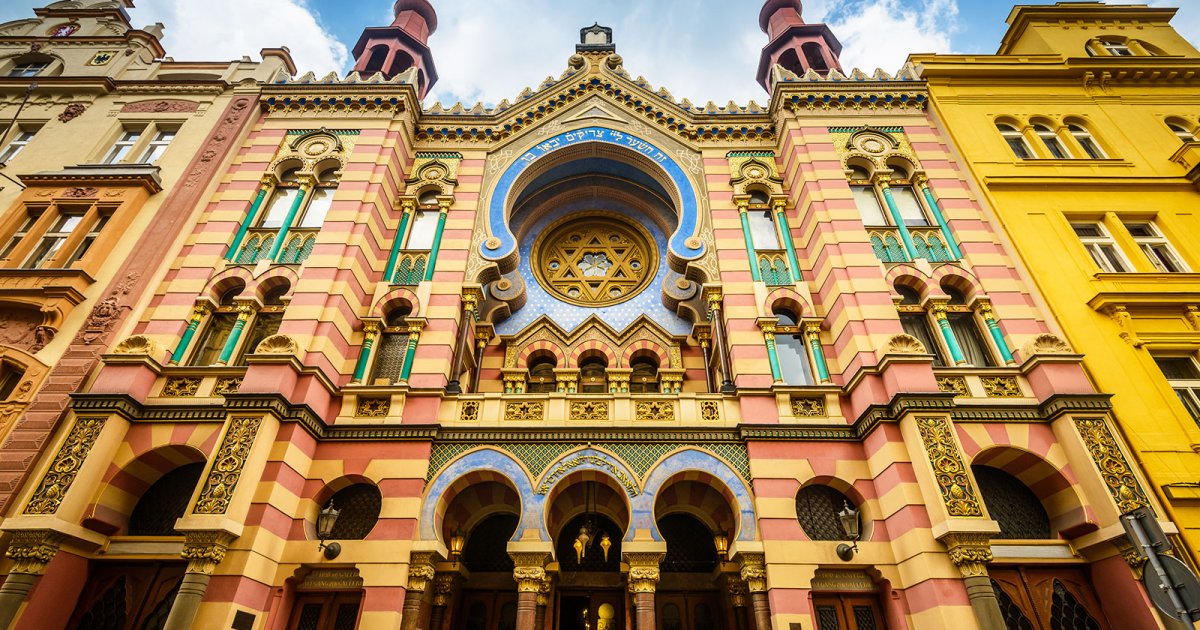JEWISH QUARTER, Synagogues
 Language: English / USA
Language: English / USA
Hi, my name’s Marcy, and I’m your personal guide. Along with MyWoWo, I’d like to welcome you to one of the wonders of the world: Prague’s old Jewish quarter.
Josefov was originally a ghetto, because for about five centuries, the city’s Jewish community was confined in an area of around 90,000 square meters. This area took on the name Josefov in honor of the Emperor Joseph II, who granted the Jews freedom to live where they chose in the 18th century. This also prompted a profound change in the urban landscape, because the wealthier families moved to other parts of the city and built their homes there.
The opening of Parizska Street at the beginning of the 20th century radically altered the appearance of the Jewish quarter. The old homes disappeared, but six synagogues, the Jewish Town Hall and the historic Jewish cemetery remained; together, they make up the Jewish Museum, testifying to the history of the community.
The most important building is the “Old New” Synagogue, originally dating to the 13th century and constructed in Romanesque-Gothic style, but later rebuilt and added to after a fire the following century. This is the oldest Jewish place of worship still operative today in Europe, and the origins of the name are unclear.
A portal with a relief decoration featuring vines leads into the delightfully simple interior, divided by the two central columns and with unusual five-rib vaults.
The Spanish Synagogue, meanwhile, was inaugurated in 1998. It is the largest in the city, and differs from all the others because it is reminiscent of the Andalusian Arab style of the Alhambra in Spain. Like the Maisel Synagogue, art objects and manuscripts are on display inside.
In the Klausen Synagogue, you can see an exhibition on the Bohemian Jews, while the Pinkas Synagogue is dedicated to the Holocaust, during which some 80,000 Jews from Bohemia and Moravia lost their lives: the names of those deported are written on the walls, while on the upper floor you can see drawings by the children held prisoner in the Terezin concentration camp.
An interesting fact: there is a clock on the Town Hall, donated by Mordecai Maisel at the end of the 16th century and rebuilt two centuries later. If you look carefully, you’ll see that the hands move anti-clockwise, just as Jewish writing is read from right to left.



